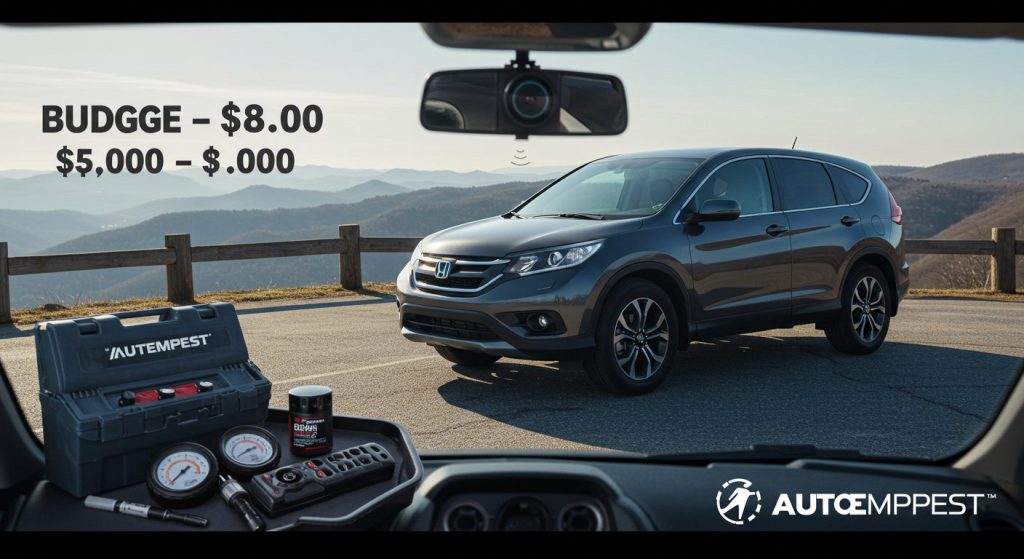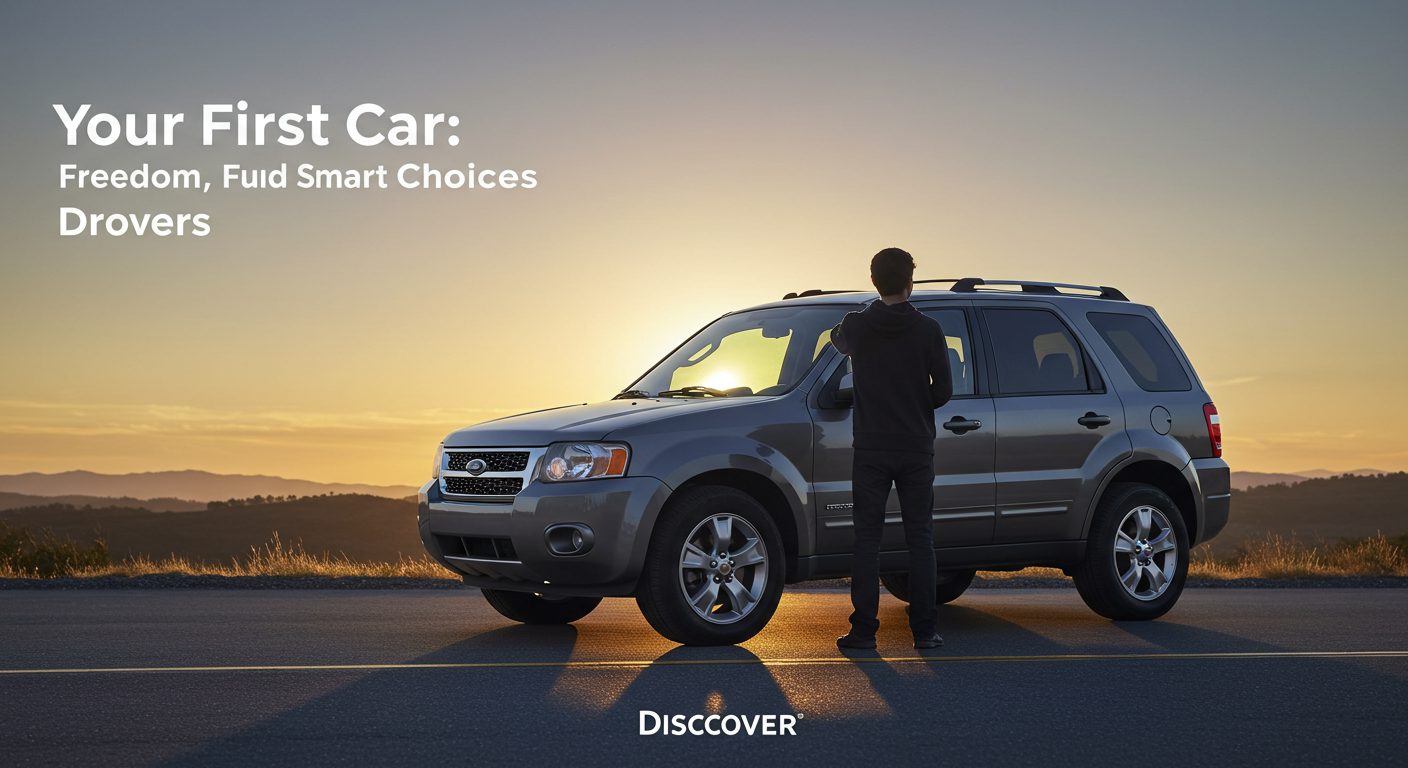Imagine being handed the keys to your first ever car. What comes to mind? The wide-open road with limitless opportunities and enjoyable experiences just waiting to be taken advantage of. before anything however, we must take into account one question. What features make a car the right fit for a novice driver? For car enthusiasts, the car is more than a vehicle to commute in, it’s a machine that should be reliable, fun to drive, encapsulate innovative technology, and of course be within budget. Whether you require a new vehicle or know someone that is about to hit the road for the first time, rest assured, this guide will help you choose and maintain a car that is fit for a challenge. So together, let us find a way to achieve your ideal car while also ensuring it is well maintained so nothing detracts from your excitement while you drive.
Finding the Right First Car: Safety Versatility
As a new driver, what are the first features you notice on a car? For new drivers, fun is often ignored but SUVs like the 2013 Ford Escape Titanium have everything: superb economical, multifaceted, multipurpose vehicles with ample cargo space, high safety ratings, excellent fuel efficiency, low insurance costs, and cruise control ensures that small SUVs models are extremely efficient. Furthermore, for those looking to go one step further, add auto Tempest to the mix to track down eBay motors, or classified listings where you can find a Honda CR-V or Toyota RAV4 for 5-8000 dollars. Finding a fully loaded model at a fraction of its original price feels like a victory lap. Excited to find the dream ride you always wanted?
Budget-Friendly Deals: Value for Your Money
Ever wondered how to manage to get the perfect model without overspending? Change is often perfect, where $8,000 is set as a cap to spend from, cutting-list of vehicles to whom have below 150,000 miles makes life easy. The search for the elusive $2,700 Prius or $4,000 Chrysler 200 becomes much easier if you’re using platforms like Auto Tempest which aggregates multiple listing.
For optimum results, pay attention to local listings or auctions with no reserve, as these can help save on shipping costs. Furthermore, price negotiations on listings can be very advantageous, with prices often being dropped significantly, for example, from $12,000 to $7,750 for a lot car.
Maintenance First: Achieving Optimal Operational Readiness
No matter how reliable a car is, it can only stay reliable if it is properly maintained. Routine maintenance ensures a car is always road-ready and mitigates safety hazards. Remember to check-off: an oil change every 5,000-7,500 miles, yearly air filter changes, and bi-annual brake fluid flushes. Utilize an OBD2 scanner to diagnose issues early, such as loose brake lights or malfunctioning reverse cameras. Easy fixes such as replacing broken bulbs or topping off wiper fluid can vastly improve vehicle safety. Following these maintenance procedures means fewer vehicle surprises and heightened confidence on the road. Which of the maintenance approach’s first tasks interest you the most?

Protecting Replacements: Smart Safety Tech
Any vehicle’s safety technology ranges from traditional airbags to high-tech smart assist and multi-camera systems. Installing a fuse box hard-wired dash camera allows for perpetual accident and theft recording, enabling damage mitigation and perpetrator catch procedures of recording devices. Window tinting is another must, especially with the ceramic kind, to significantly reduce UV and heat to improve vehicle comfort. Be diligent with recalls searching free sites with your VIN to repair defective door latches and shifter bushings for no base charge. Furthermore, these replacements shift cars from smart enabled vehicles to command fortresses where driving becomes the only thing to focus on.
Out of all the options, which safety feature captures your attention the most?
Changes of Fluids: The Lifeblood of Your Car
Regard fluids as your car’s ‘lifeblood’- fail to maintain them, and your ride’s performance will suffer. Replace engine oil with full synthetic 5W-30 for turbo engines, and do the same with transmission fluid as soon as it darkens. Change coolant every 50,000 miles to prevent rusting. Remember to use test strips to check the coolant’s acidity, and make sure there’s a 50/50 mixture of coolant and water. For brakes, flush out the hygroscopic fluid to prevent boils or rust. The maintenance tasks will keep your engine purring and brakes to be in optimal conditions, preventing costly repairs down the road. Pick up a spill-proof funnel and get going—your car will appreciate these changes.
Brakes and Tires: Stopping Power and Grip
Nothing is as imperative as safely coming to a stop. Upgrade to a performance level of galvanized brake pads and rotors, plus flush the brake fluid to maintain stopping power. Tire tread depth can be checked using a quarter—there should be enough tread that George Washington’s head is covered to ensure a safe grip. Inflate the tires, both the primary and the spare, to the recommended PSI; having a flat spare is useless during emergencies. Tires, whether under six years in age or older, must have even wear to keep you glued to the road, whether raining or shining. When did you last check your tires?
Performance Boosts: Spark Plugs and Turbos
Is running your car smoothly while sipping gas a dream? Swap spark plugs at an interval of 100,000 miles, while ensuring the gap for a Ford Escape is 0.030. If you have an EcoBoost Turbocharged engine, check the wastegate for play for avoiding under-boost issues. Early problem identification can avert worset–like a $2,000 turbo replacement. These adjustments make every drive feel like a joyride while restoring horsepower and driving efficiency. Imagine the thrill from the acceleration of a freshly tuned engine—are you ready to experience it?
Battery and Filters: Reliability You Can Trust
The risk of being stranded increases without the aid of a battery or filter, both of which are usually neglected until they become a problem.
By using a battery tester, or taking it to a parts store, you can check its condition; a lithium battery with a jump starter is incredibly advantageous… it is 18 pounds lighter than a lead-acid battery. Clean the turbo’s engine and cabin air filters to promote engine performance, and remove moldy filters that are dangerous to breathe in—these are serious health risks. These small changes guarantee that your car doesn’t just start every time, but also ensures that the air inside is not stale. What is your most effective strategy for maintaining road dependability?
A joyful feeling emerges when giving back with… A car that serves a purpose
Cars are not simply vehicles—they have the potential to transform an existence. Providing an Escape Ford to a less fortunate family in need fully maintained can single-handedly provide them with new freedom, alongside numerous opportunities. Alongside this, providing a toolkit encourages them to get creative, and to spark some new interest. Supporting charitable donations such as Building Homes for Heroes, who offer veterans free homes to live in, further enhances the effect. Each oil change and tire check can serve so many other people. How will you make a difference with your car?
Key Takeaways
- Choose Wisely: Pick a safe, reliable small SUV like a Ford Escape for crash protection and fuel efficiency.
- Hunt Smart: Use AutoTempest to find budget-friendly deals under $8,000 with low mileage.
- Stay Maintained: Follow a checklist for fluids, filters, and bulbs to prevent breakdowns.
- Boost Safety: Add a dash cam, tint windows, and fix recalls for peace of mind.
- Keep Fluids Fresh: Change oil, coolant, and brake fluid regularly to extend your car’s life.
- Prioritize Brakes and Tires: New pads, rotors, and grippy tires ensure safe stops.
- Tune Performance: Replace spark plugs and check turbos for better efficiency and power.
- Ensure Reliability: Upgrade to a lithium battery and clean filters for worry-free drives.
- Give Back: Use your car skills to help others, like donating a vehicle or supporting charities.
Conclusion
Choosing and maintaining your first car is more than a rite of passage—it’s a chance to embrace the road with confidence and care. Not every driver will follow the same path; some will geek out over spark plug gaps, while others just want a reliable ride. That’s the beauty of it—there’s room to make it your own. The insights here, from picking a safe SUV to keeping fluids fresh, empower you to hit the road worry-free. So, grab those keys, check that tire pressure, and start your journey. What’s the first adventure you’ll take with your dream car?
